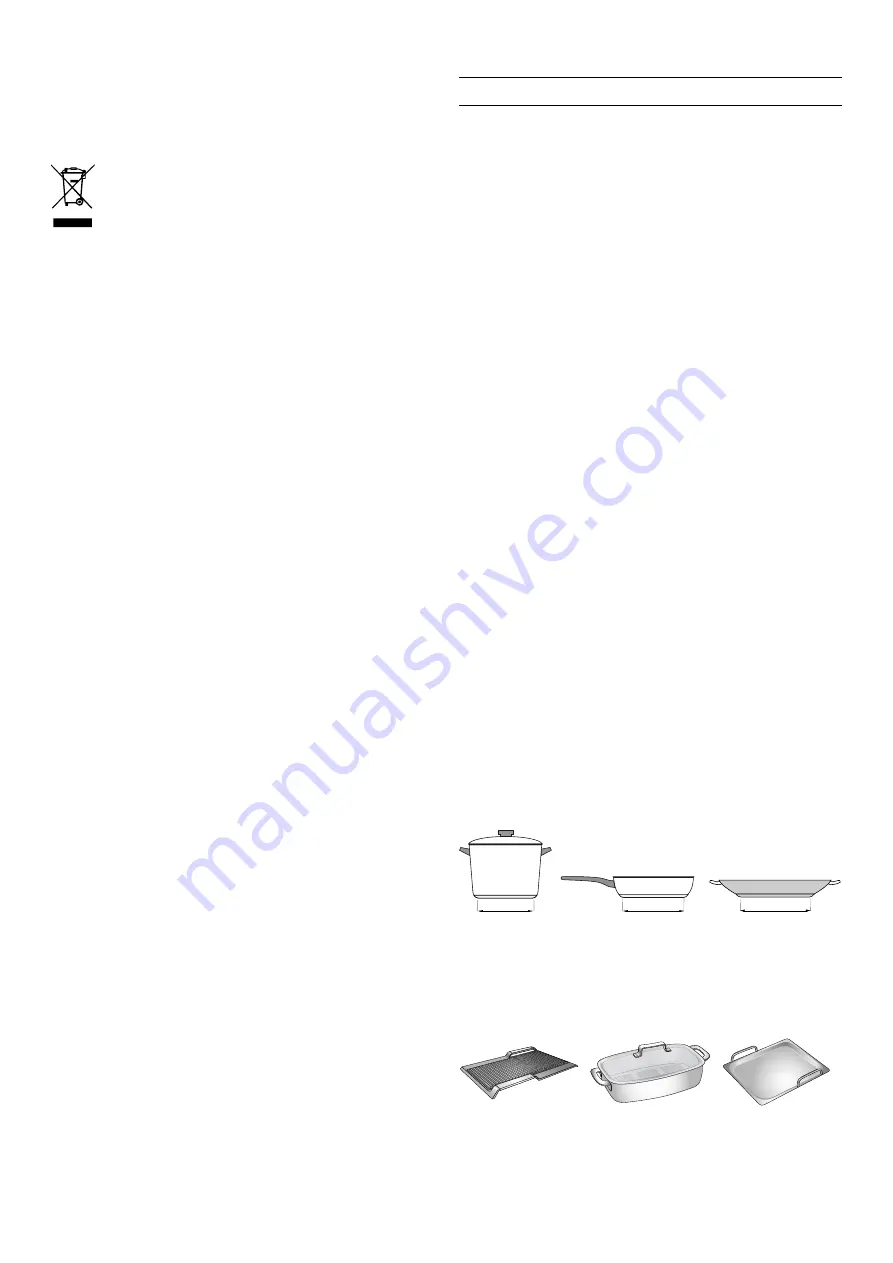
9
Induction cooking
en
Environmentally-friendly disposal
Dispose of packaging in an environmentally-friendly
manner.
f
Induction cooking
Induction cooking
Advantages of induction cooking
Induction cooking is very different from traditional
cooking methods, as heat builds up directly in the item
of cookware. This offers numerous advantages:
▯
Saves time when boiling and frying.
▯
Saves energy.
▯
Easier to care for and clean. Spilled food does not
burn on as quickly.
▯
Heat control and safety – the hob increases or
decreases the heat supply as soon as the user
changes the setting. The induction hotplate stops
the heat supply as soon as the cookware is removed
from the hotplate, without having to switch it off
first.
Cookware
Only use ferromagnetic cookware for induction cooking,
such as:
▯
Cookware made from enamelled steel
▯
Cookware made from cast iron
▯
Special induction-compatible cookware made from
stainless steel.
To check whether your cookware is suitable for
induction cooking, refer to the section entitled
"Suitability test of tableware"
To achieve a good cooking result, the ferromagnetic
area on the base of the pan should match the size of the
hotplate. If a hotplate does not detect an item of
cookware, try placing it on another hotplate with a
smaller diameter.
If the flexible cooking zone is being used as a single
hotplate, larger items of cookware can be used as these
are particularly suited to this area. You can find
information on positioning cookware in the section
entitled
"CombiZone function" on page 19
.
This appliance is labelled in accordance with
European Directive 2012/19/EU concerning
used electrical and electronic appliances
(waste electrical and electronic equipment -
WEEE). The guideline determines the
framework for the return and recycling of used
appliances as applicable throughout the EU.
FP
FP
FP










































